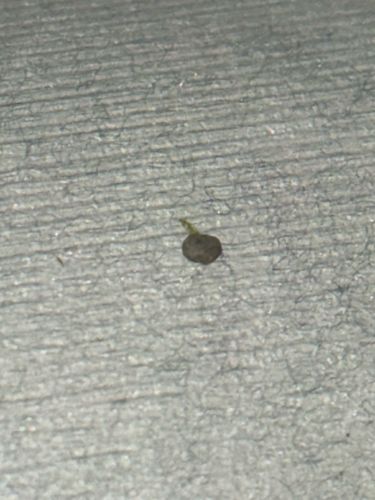Household Casebearer Moth (larva)
Scientific Name: Phereoeca uterella
Order & Family: Lepidoptera, Tineidae
Size: Larvae are typically 10-15 mm (0.4-0.6 inches) long, with their case adding to the overall apparent size. Adult moths have a wingspan of about 10-14 mm (0.4-0.55 inches).

Natural Habitat
The larvae are commonly found indoors in homes and buildings, particularly in quiet, undisturbed areas like under furniture, behind baseboards, in closets, or around air vents. They prefer humid conditions and can also be found outdoors in areas with accumulated debris.
Diet & Feeding
The larvae are scavengers, feeding on a variety of organic materials including wool, silk, hair, felt, lint, dust, spiderwebs, and dried animal remains. They can also feed on paper and some plant-based materials.
Behavior Patterns
Larvae of case-bearing moths build and live inside a silken case, which they enlarge as they grow. They drag this case with them and can retract fully inside it when disturbed. Adult moths are typically nocturnal and are attracted to lights. The larvae are often found crawling on surfaces like walls or ceilings.
Risks & Benefits
Potential risks include damage to natural fibers such as wool clothing, carpets, and upholstered furniture. They are considered minor household pests. There are no significant benefits associated with their indoor presence.
Identified on: 9/2/2025